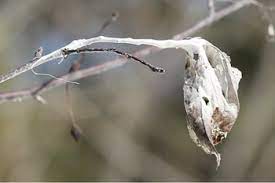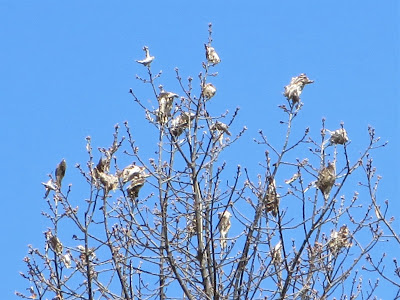SCORES & OUTDOORS: Not too early to talk about browntail moth caterpillars
 by Roland D. Hallee
by Roland D. Hallee
Last summer we experienced a season of discomfort with multiple rashes brought on by the browntail moth caterpillar. Personally, I suffered through it no fewer than six times. Yes, it is only January, but the old saying goes, “an ounce of prevention is worth a pound of cure.”
It’s not too early to begin looking for signs of the pesky critters and make a strong attempt to eradicate them early, to either eliminate or, at least, limit the amount of those irritating little brown hairs.
According to the Maine Department of Agriculture Conservation and Forestry, follow the “Four Rs to Knockout Browntail In Our Communities and Reduce the Itch!”
In a press release, they advise that encounters with hairs from browntail moth caterpillars can cause mild to severe rashes and respiratory issues. Browntail moth caterpillars overwinter in webs that may have from a couple dozen to several hundred caterpillars each. Some people say they experience itching with fewer than 10 webs per tree or shrub; others say they have no symptoms from heavier infestations around their yards.

Webs can look like fist-sized clumps of leaves tied together tightly with silk, or like single leaves hanging onto twigs.
Winter is the best time to spot an infestation and take steps towards controlling the caterpillars and reducing the itch.
Use these Four R’s to get you started:
- Recognize: Learn how to tell if the trees where you live, work and play have browntail moth. Their winter webs can look like single leaves hanging onto twigs, or fist-sized clumps of leaves tied together tightly with silk. Knowing where the webs are in your yard or town can help inform your management decisions.
- Remove: With permission, use hand snips or extendable pole pruners to remove webs within reach from the ground and away from hazards such as powerlines. Protect your eyes and skin from hairs that might be present from past caterpillar activity. After removal, destroy webs by soaking or burning.
- Recruit: Hire professional help for treatment of webs out of reach or near hazards on property you own or manage. Line up help during winter. Licensed Professional Arborists can remove a limited number of webs in larger trees and shrubs in the winter. In trees where the caterpillars’ hairs cause a nuisance and where it is not practical to remove webs, Licensed Pesticide Applicators may be able to use insecticides during the growing season to manage browntail moth.
- Reach Out: If you find browntail moth in your neighborhood, let your neighbors and town officials know. The more that neighbors, businesses and others get together to respond to the problem, the better the results.
They invite you to join in scheduling awareness-raising events and promoting management of browntail moth this winter, with a focus in February. Use #KnockoutBrowntail on social media. Efforts could include organizing groups to map infestations on town and school properties, hosting public service web-clipping events, hosting contests for the most webs clipped or other community and knowledge building activities.
For more information, contact 211 Maine for answers to frequently asked questions on browntail moths: Call 211 or 1-877-463-6207, text your ZIP code to 898-211, or visit our website. While you are there, sign up for the new Browntail Update Bulletin.
Roland’s trivia question of the week:
What was the closest score in a Super Bowl game?
Responsible journalism is hard work!
It is also expensive!
If you enjoy reading The Town Line and the good news we bring you each week, would you consider a donation to help us continue the work we’re doing?
The Town Line is a 501(c)(3) nonprofit private foundation, and all donations are tax deductible under the Internal Revenue Service code.
To help, please visit our online donation page or mail a check payable to The Town Line, PO Box 89, South China, ME 04358. Your contribution is appreciated!



Leave a Reply
Want to join the discussion?Feel free to contribute!